Table of Contents
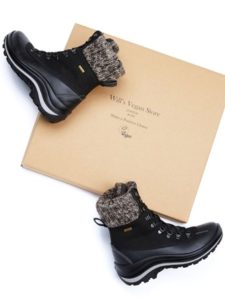
Our top pick
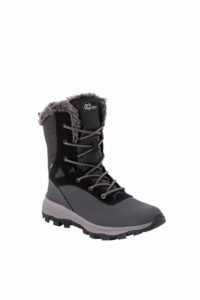
Runner-up best snow boot
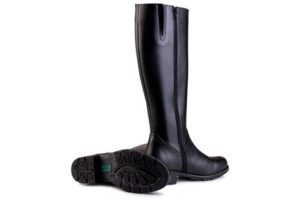
Best urban winter boot
Looking to dip your toe into sustainable fashion? You’ll need some eco-friendly waterproof winter boots for that.
What makes a boot eco-friendly? In short, the materials and processes used to make it. This means recycled fabrics or fibers, efficient cutting and construction techniques, non-toxic glues and dyes, and natural or physical waterproofing technologies, rather than toxic chemicals that can harm wildlife and workers making the shoes.
Curious about how we rate products? Click here to view our methodology, which at its core, is about voting with our dollars to fight climate change.

WVSport Snow Boots
Highlights: Made from sustainable materials in a factory powered by the sun and by a company that cares, these comfortable, fully waterproof, carbon neutral boots are rated down to -22 / -7.6 Fahrenheit and may well become the best pair of boots you’ll ever own.
These cozy Snow Boots are highly water resistant with special waterproof membrane, sealed tongue and treated uppers but no PFC. The boot allows breathability and long-lasting protection, and has rubber injection outsoles with areas for grip, traction, braking and stability. It is fully lined with insulating vegan wool and vegan shearling, so the boots are suitable down to -22° / -7.6 Fahrenheit.
This boot boasts removable EVA insoles for support forefoot and midfoot. For added durability, the boots have advanced ballistic welded duck boot construction with abrasion and scuff resistant uppers.
Best of all, these boots are carbon neutral!
About Will’s Vegan Shoes
Will’s Vegan Shoes have been making sustainable shoes, clothing, and accessories since 2012, with products made ethically in small batches in Tuscany, Italy. They don’t use:
- Phthalates
- PFCs (all WVS’s boots are certified PFC-free!)
- Nanotechnology
- APEOs.
The company’s eco-friendly vegan leather is made using bio oil from organic cereal crops grown in Northern Europe. WVS’s ‘leathers’ meet OEKO Tex 100 and REACH regulations, with Ecolabel certification for many products where applicable.
WVS uses sustainable materials, including:
- Recycled rubber for insoles
- Exclusively recycled polyester
- Recycled cotton
- Pre-dyed offcuts from the textile industry.
This helps to save resources such as water, energy, fertilizer, and pesticides, and reduces carbon emissions overall. It also sources as many materials as possible from within Europe, to further reduce environmental impacts.
The company has a large solar array at its Italian factory, supplying 70% of the power necessary to produce WVSport footwear.
WVS operates a plastic-free carbon neutral supply chain using sustainable materials. In June 2020, WVS laid out a plan to introduce fully biodegradable sneakers and trainers, with biodegradable versions of its most popular models. The Chicago Low Top and Rio trainers already include these materials.
WVS also has solid ethics when it comes to workers’ rights with anti-discrimination and agency worker protection and their own Charter of Human Responsibilities (or Code of Ethics) which helps ensure the company is committed to respecting the rights, work and dignity of its employees. It only works with factories in the European Union, which are covered by a variety of staunch health and safety laws and employment regulations.
We don’t believe in doing something to protect animals whilst harming humans and the planet… There is always a story behind a low price.
Will’s Vegan Shoes
Other things we like about Will’s Vegan Shoes include:
- Certified Carbon Neutral deliveries, returns, and exchanges
- Free shipping and returns in the US
- Exchanges for 365 days on all orders
- Sustainable non-treated paper and cardboard packaging
- Plastic-free and carbon neutral packaging.
As for the shoes themselves, these are made using CAD design technology that mirrors typical walking patterns to ensure comfort and function while minimizing resource use in manufacturing processes. The shoes use Vibram soles and a patented Support System to ensure a secure and comfortable fit and excellent grip.
Our experience after one year
A member of our team, Popra, has been wearing these boots for two winters now in Jackson Hole, Wyoming and has been happy with the quality and ability of the product to tackle snow and wet mountain weather. Our only gripe is the boots can’t handle really deep snow as the boots are only mid-rise.
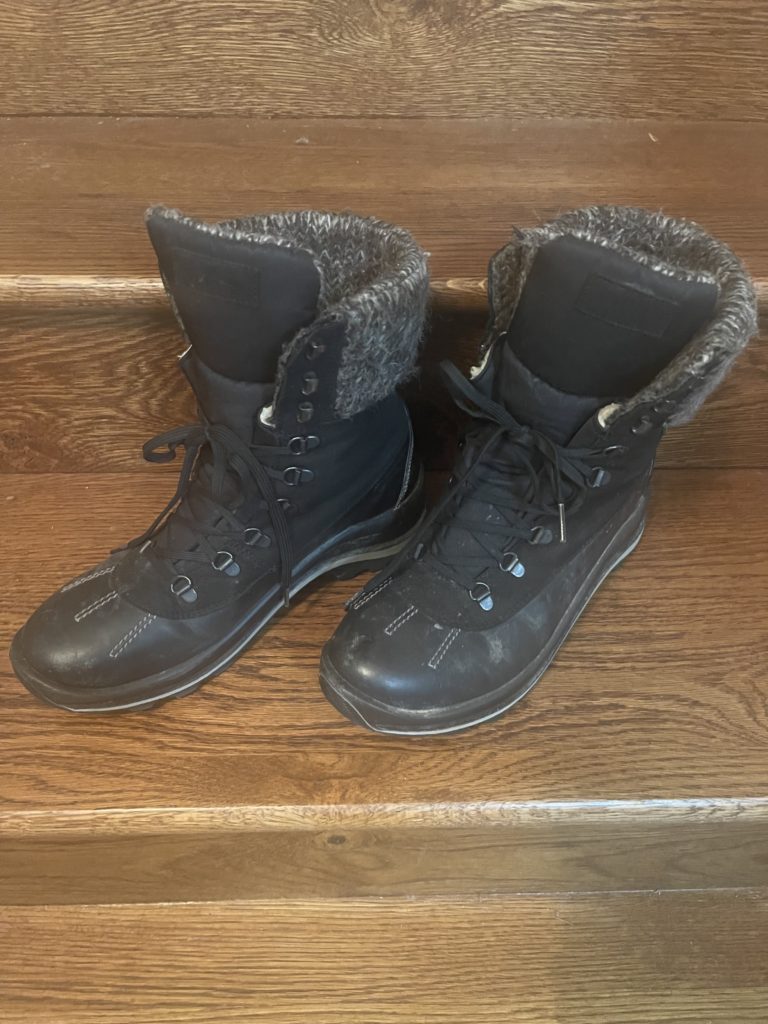
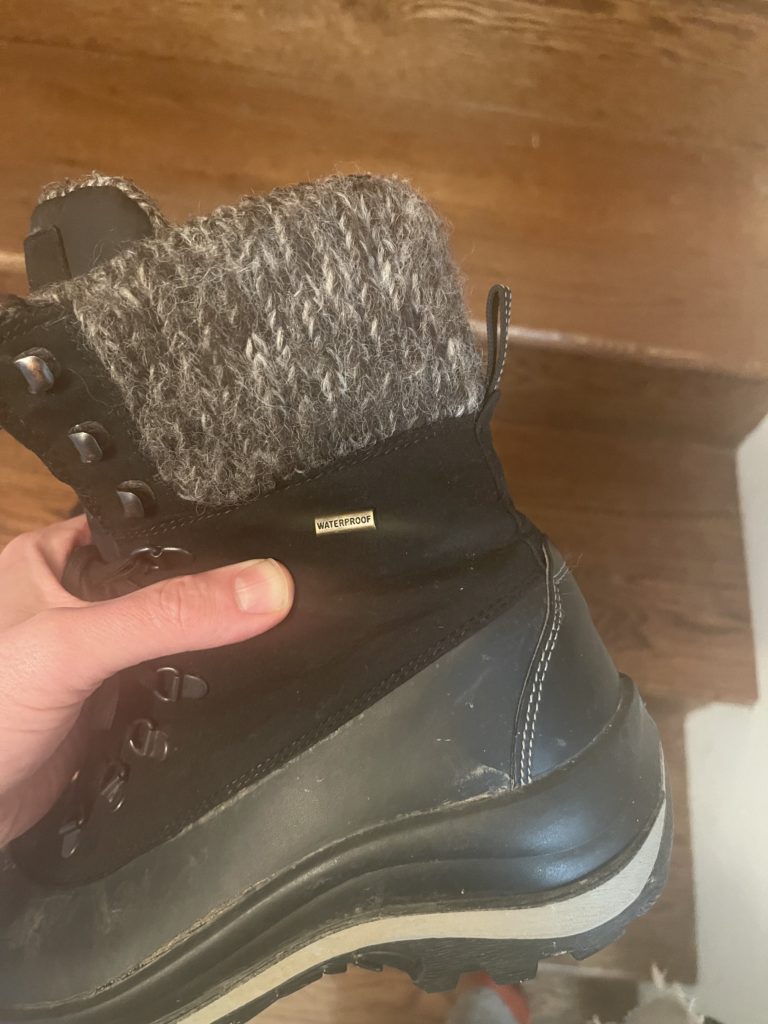
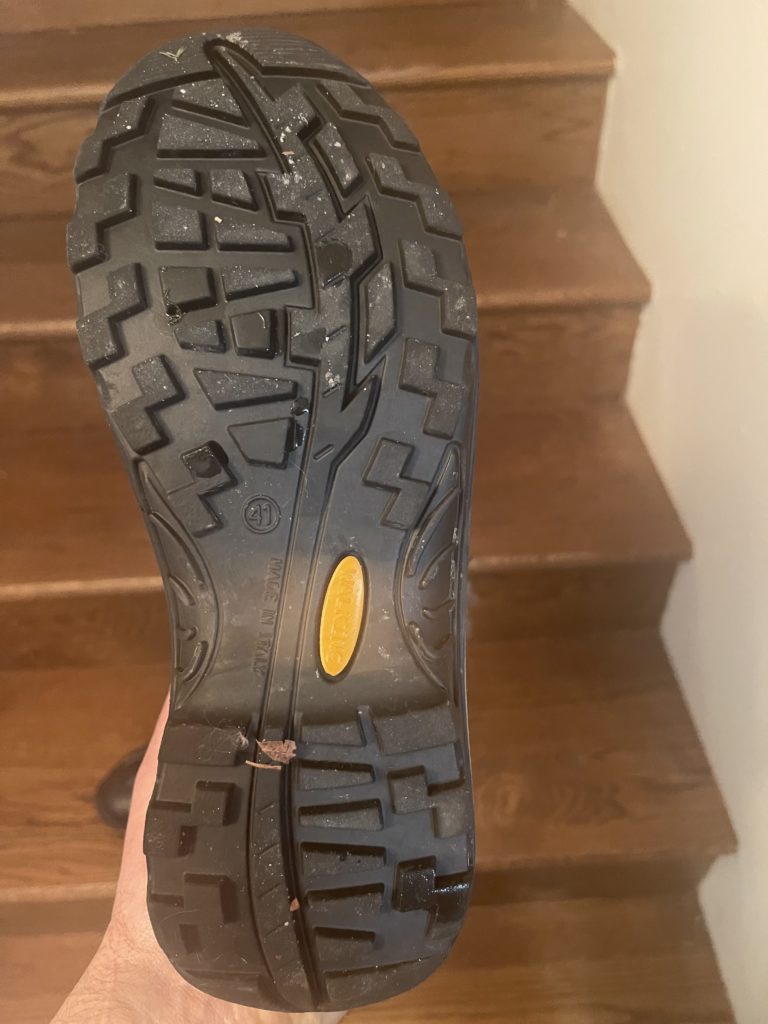

Jack Wolfskin Everquest Women’s Winter Boots
Highlights: Stylish, super cozy, medium-high winter boots with excellent traction and easy on and off. PFC-free and made with recycled materials.
The Everquest Texapore Snow boot from Jack Wolfskin is a great-looking winter boot that can handle a good amount of snow. Like the WVS snow boots, though, it’s not high-rise. More of a mid-rise snow boot, the Everquest offers impressive insulation without bulk, weighing in at less than a kilogram per pair. It can handle temperatures down to -30° C and is great in the rain and snow, thanks to the PFC-free breathable Texapore membrane made with recycled materials.
The rubber outsole features a deep tread with excellent grip, which I put to the test in a freeze/thaw Ottawa winter. Thankfully, these boots don’t require any breaking in time and were good to go right off the plane!
My experience with the Everquest Snow Boots
I tried out a pair of Everquest boots on a trip to Ottawa in winter. The boots admirably handled temperatures down to -19 C and offered fantastic grip in a particularly slippery winter season. So much so that I wore these while teaching my toddler to skate for the first time on an outdoor rink!
The boots were easy to get on and off thanks to robust finger loops. Overall, they feel really robust, well-made, and durable. They also looked great, meaning I fit right in with the stylish winter-savvy Ottawa locals.
Unfortunately, these boots are a little too snug for my feet. Next time, I’ll size up. For reference, I’m usually a 6.5/7 and I got a 6.5. One boot fit well, if a little snug, and the other was too tight to wear for more than an hour or so, even with thinner socks. I’ll be (reluctantly) passing these gorgeous boots onto a friend with a size 6 foot to enjoy.
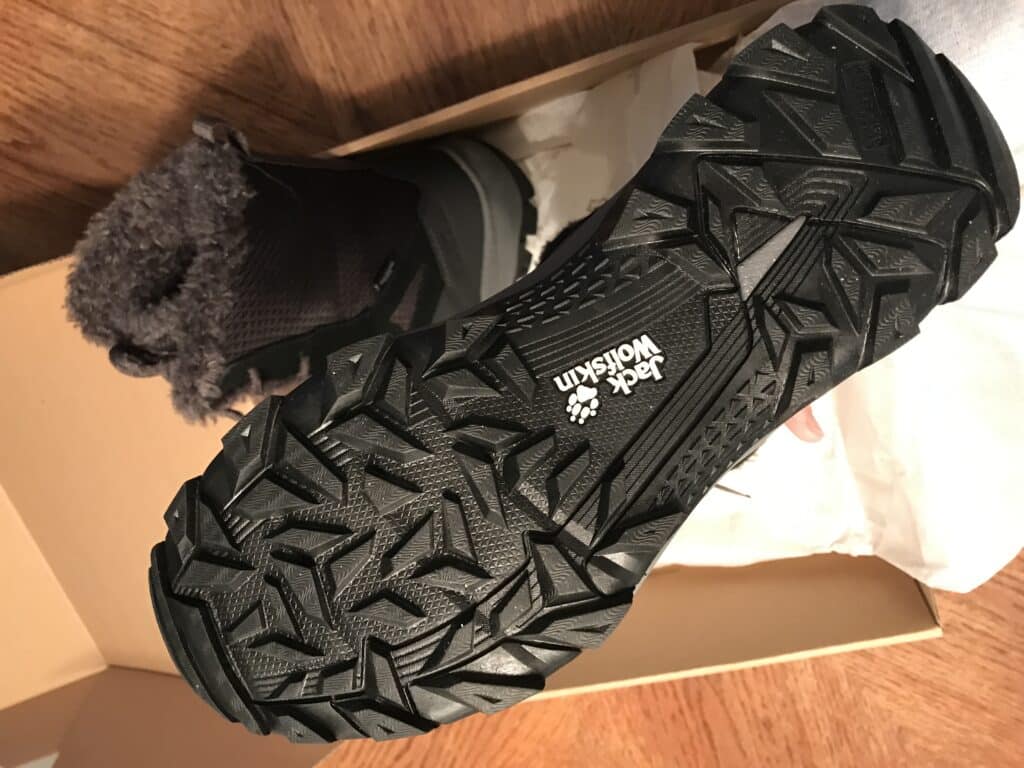
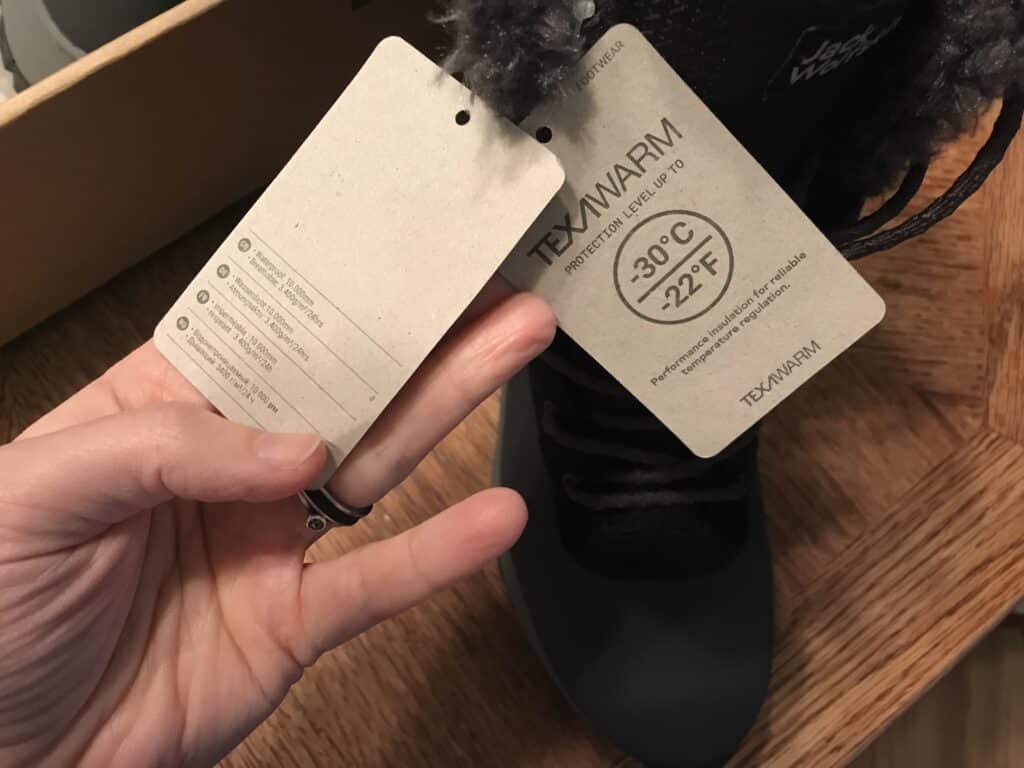
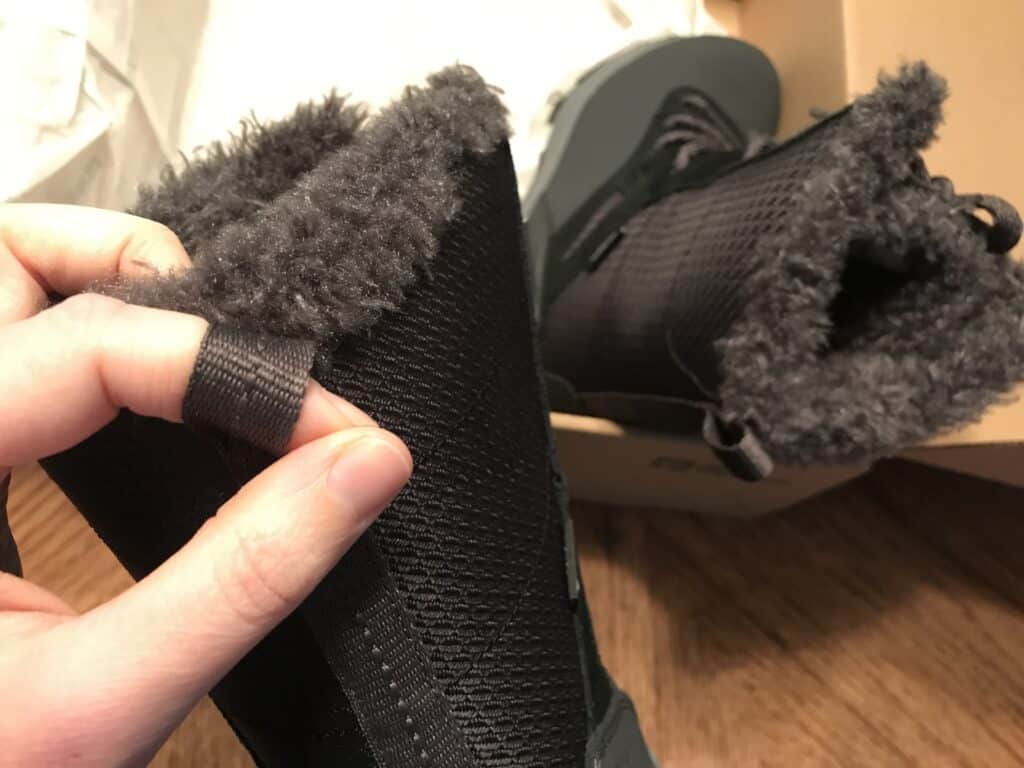
Sustainability at Jack Wolfskin
Jack Wolfskin is a well-known company that has made great sustainability strides in recent years. Some highlights include:
- Awarded “Leader” status by the Fair Wear Foundation (FWF) at least six times (in a row!)
- Certified by EcoLabel
- Member of the Sustainable Apparel Coalition (SAC) since 2020
- Using the Higg Index for measuring sustainability within the company
- BlueSign® partner (and publishes its own Restricted Substances List – the Green Book – on the JW website)
- Part of the Zero Discharge of Hazardous Chemicals (ZDHC) program
- Banned all dangerous chemicals from its entire production chain by 2020
- Stopped using PVC in 2011
- Stopped using APEO and phthalates in its products in 2014
- Completely phased out PFCs in 2021.
Jack Wolfskin’s sustainability approach is all encompassing and doesn’t just focus on its products but also how they’re made. This means the company:
- Uses exclusively certified organic cotton, including GOTS and OCS cotton (since 2013)
- Regularly inspects the wastewater from suppliers’ factories
- Uses 100% green electricity (since 2012), including some it generates through solar arrays
- Uses energy efficient fixtures, fittings, and lighting in stores
- Avoids PVC materials for store displays
- Favors locally sourced wood and recyclable materials for in-store fixtures and display materials.
Unfortunately, Jack Wolfskin does still use down in some products, but this is certified to the Responsible Down Standard, which goes some way to safeguarding animal welfare even if it’s not foolproof. The company states that it does not use real fur, angora, or mulesed merino wool.
No PFCs at Jack Wolfskin
The waterproof membranes and coatings of Jack Wolfskin polyurethane products have been PFC-free since 2013 and all of its clothing, packs and bags were completely 100% PFC-free as of spring/summer 2019.
Jack Wolfskin’s TEXAPORE weatherproof technology is PFC-free as it is based on membranes and coatings made from polyurethane which are extremely flexible, durable, and waterproof, with high breathability.
The company’s Texapore Ecosphere material comprises mostly recycled PET bottles with a membrane manufactured from reconditioned remnants left over from the production process, creating a zero-waste process. Even the JW plastic mailer bags are made with 100% recycled LDPE which can itself be easily recycled.
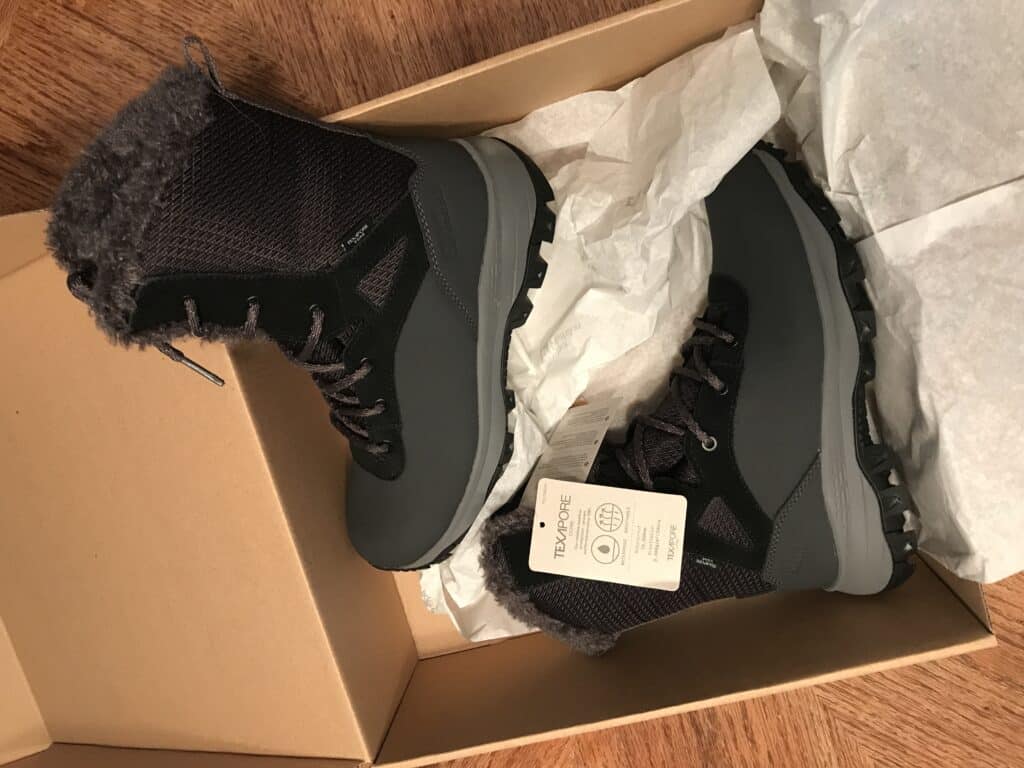
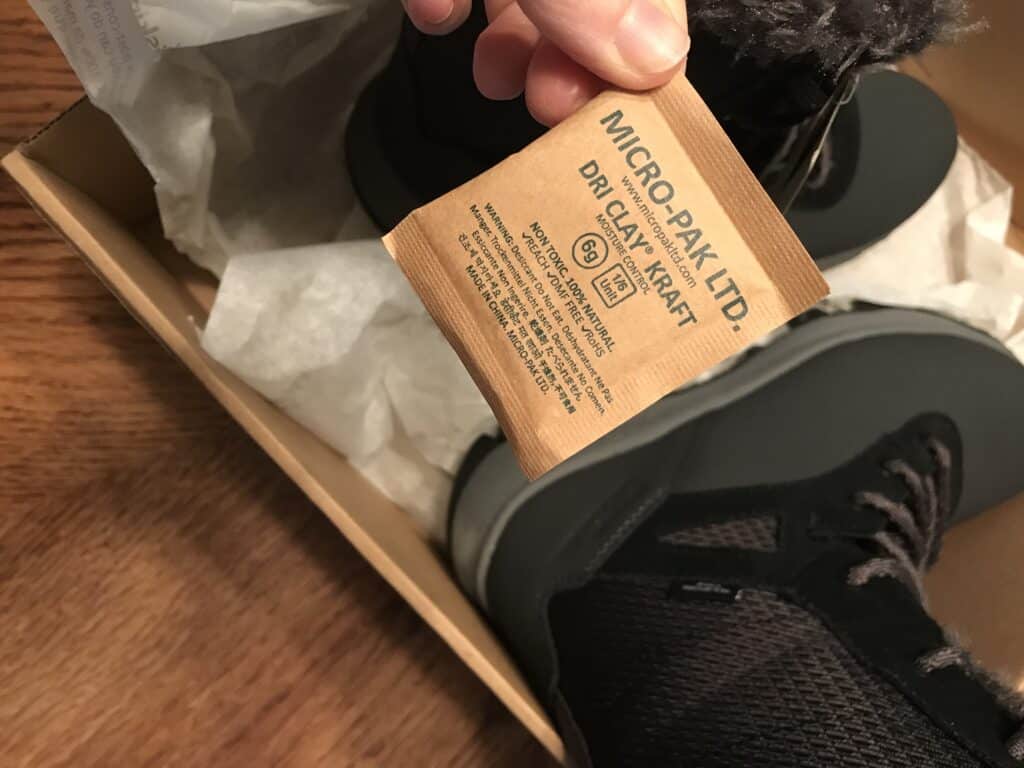
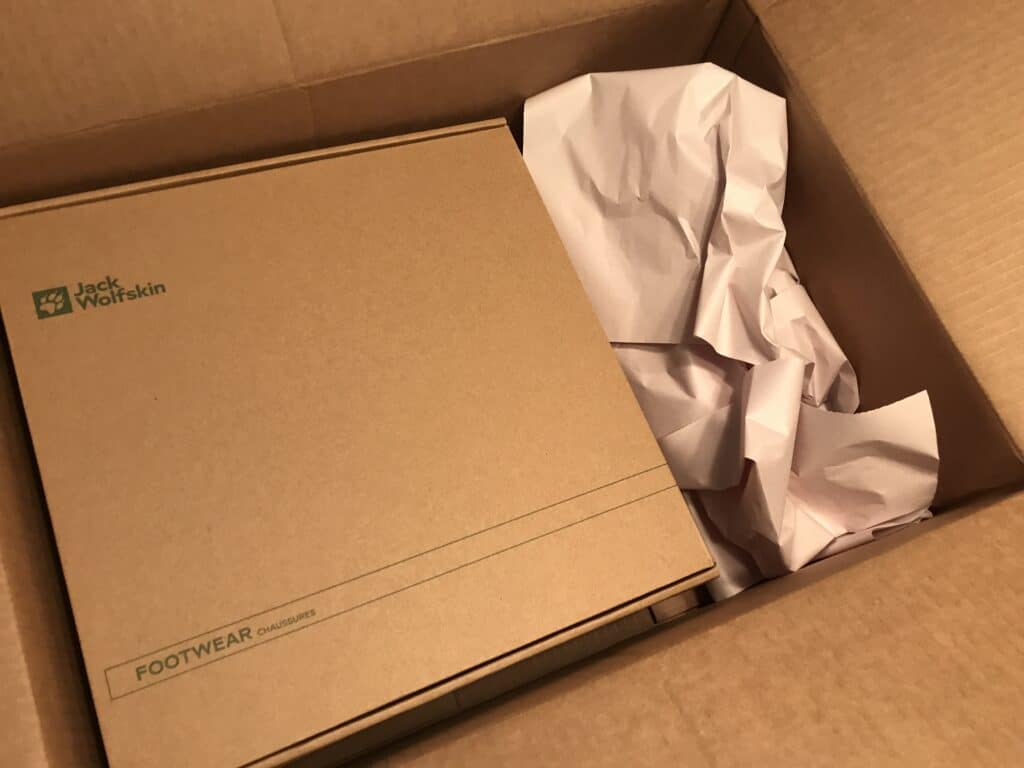
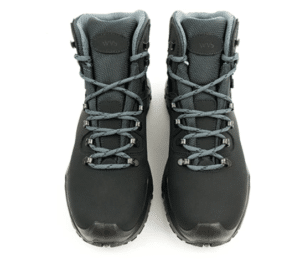
WVSport Waterproof Hiking Boots
Highlights: These carbon neutral, waterproof boots are affordable and ethically made.
Carbon neutral and ethically made in Italy, the WVSport Waterproof Hiking Boots are extremely affordable and arguably the best hiking boots you’ll ever own. They have been designed (in the Dolomite mountains!) for traction, stability, comfort, and durability, boast a Vibram rubber injection sole, with outsoles ballistic welded onto the uppers so they won’t suffer the fate of many hiking boots and just break apart after a few gnarly descents on steep scree.
The uppers are made with abrasion and scuff resistant Lyliane 3DMX and Cordura, and the boots are comfortable as well as technical, with removable cushioned anatomic insoles and padding on the tongue and around the collar.
These boots are much easier than most winter boots to put on and take off. The smart design features a finger tab and high-grade laces with smooth sliding.
The WVSport Hiking Boots are lab-tested for waterproofing, with waterproof seams, a sealed tongue, and a special waterproof membrane that prevents water penetration. WVS note that this boot is perfectly fine to wear for “in deep snow, deep puddles, running water or extended periods of heavy rain.” Whatever the conditions, your feet will stay dry.
These boots aren’t insulated, unlike WVS’s Snow Boots. So, if you do wear these in colder temperatures, get a good pair of socks.

Eco Vegan Shoes – Alicia Boot
Highlights: A more formal, streamlined winter boot with ecorepel® finish, insoles made with recycled polyurethane and castor oil polyurethane and no fluorocarbons or PVC.
Eco Vegan Shoes offers a balance of durability and style with sustainability and eco-friendliness. The company’s argument is that a well-made pair of vegan shoes featuring polyurethane will outlast most leather shoes, making them more eco-friendly overall as fewer resources are used.
While Eco Vegan Shoes tries to find that happy middle, it certainly doesn’t compromise on animal ethics, with all of its products certified by the Vegan Society. And, happily, it uses recycled polyurethane and polyurethane made from castor beans to make the OrthoLite® insole. The castor beans are a great crop that requires little water or other inputs.
The water-repelling finish ecorepel® is made with paraffin, so isn’t actually eco-friendly as it’s a petroleum-derived products. That said, paraffin is a by-product of the petroleum industry and does break down over time. The ecorepel® finish doesn’t contain fluorocarbons (PFCs) and allows treated fabrics to remain almost entirely biodegradable and non-toxic while also being waterproof.
The Alicia Boot has a replaceable Eco-OrthoLite® insole for comfort, support, and hygiene, and is water resistant and hard wearing. This country-style knee boot has a leather look but is made of microfiber, and is warm and dry in the winter but not too hot in fall or spring.
The Alicia Boot has a Grip+ sole by Solepex Finland made of hard-wearing thermoplastic polyurethane (TPU). It is designed for extreme cold and plenty of snow, with special spikes in the grip made of a softer material than the rest of the sole.
The design means you get more friction, i.e., traction, on wet surfaces, ice, and snow. The sole’s open channel design also helps snow fall off, so it can’t form a slippery film.
All Eco Vegan Shoes products are made either in the EU or in Indonesia. The footwear is BlueSign® approved, meaning “no child labour, no sweatshop labour, no slavery, fair pay and decent terms of employment, safe working conditions.”
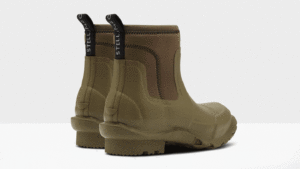
Hunter Boots with Stella McCartney
Highlights: High fashion, vegan-friendly, eco-friendly waterproof winter boot made from sustainably sourced rubber with rubber neoprene sleeve for comfort.
Hunter Boots collaborated with the fashion designer Stella McCartney to produce a version of their iconic gumboot which debuted at Stella McCartney’s Autumn Winter 2019 runway show in Paris.
The vegan Hunter boot features:
- Natural rubber from certified sustainable forests in Guatemala
- A Yulex stretch sock inside the boot (a plant-based, certified natural rubber neoprene that generates 80% less carbon dioxide than conventional neoprene)
- The iconic Wellington style with a handmade sculptural sole and tread.
This boot is available in olive and black for every gender and is vegan-friendly, waterproof, and comfortable.
I’ve had little luck with Hunter boots over the years. I’ve managed to destroy two pairs of Hunter tall boots within a matter of weeks by doing nothing more than taking my pup to the beach.
Going through boots so quickly is certainly not very eco-friendly, so I’m hoping this latest move by Hunter will help make the boots more durable and reduce their overall impact.
Sustainability at Hunter boots
Hunter has taken several steps to improve sustainability. The company has been working with The Carbon Trust since 2018 to measure carbon emissions from stores and office and has set targets for reducing those emissions in alignment with the Science-Based Targets Initiatives to meet the goals of the Paris Agreement.
Hunter also carried out a lifecycle analysis of the Original Tall boot in 2017, from rubber harvesting to end-of-life. This has allowed Hunter to find areas in which to improve sustainability, and it was this initiative that led to the collaboration with Stella McCartney.
Hunter also began including recycled polyester and organic cotton in its collections from Spring 2020 onwards. The company is also careful to work only with rubber tree plantations that don’t contribute to deforestation, use biocides, or use slash-and-burn techniques and where workers’ rights and local communities are protected alongside the natural environment. This means it commissions third-party audits and visit the farms itself.
And finally, if you live in the UK, near London, you can now drop off your old Hunter boots at the Regent Street store for recycling in partnership with First Mile as part of the Hunter ReBoot campaign. The old boots are recycled into equestrian arena flooring, playground surfacing, roads, kickboxing bag filler and other products. Hunter plans to roll out this campaign across its entire distribution network.
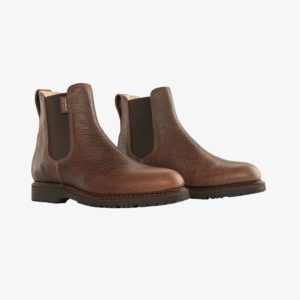
Patagonia Wild Idea Work Boots
Highlights: Known for being innovative and eco-friendlier than most companies, Patagonia offer a leather work boot made with vegetable tanning and a partially recycled, replaceable sole.
Patagonia typically focuses on producing technical wear from recycled fabrics and fibers, including recycled materials from landfills and fishing nets dredged from the oceans. Their October surprise this year is the Wild Idea Work Boot, made using leather hides from the buffalo killed in South Dakota to produce the company’s spin-off outfit Patagonia Provisions® Buffalo Jerky. The boots went on sale October 30th, 2020, and there will be just 500 Wild Idea Work Boots available in the men’s design (with a cap toe) and 500 in the women’s Chelsea style design, so if you like them, get them now!
So, while Patagonia pat themselves on the back for no longer wasting the hides from the buffalo they slaughter, this is a bit of a weird convolution of the ‘by-products’ argument sometimes used in favor of leather. The line is limited to 1,000 pairs of shoes as this is the number of bison harvested at the ranch in a year. Admittedly, I don’t know much about making leather shoes, but I do know that bison are pretty big, so I’m not sure why one bison hide can only make a single pair of shoes. If you do know, I’d love to hear from you in the comments – seriously!
Happily, Patagonia have partnered with an eco-friendly tanning company that uses wet-green technology. This means fewer toxic chemicals and instead uses tannins from fallen and waste olive trees. Though they don’t explicitly mention that they avoid chromium or other toxic heavy metals, Patagonia is generally very good about avoiding toxic chemicals.
The Wild Work Boots also have a Vibram® EcoStep outsole made with 30% recycled material. This sole should last for years and has excellent grip, but can be replaced easily to extend the life of the boot thanks to the use of a Goodyear welt to attach the sole to the upper.
Buffalo leather is a hardworking, breathable, moisture-wicking material that is comfortable and has a relaxed fit without losing its shape. This boot also has sturdy side elastic panels and a back pull tab to make it easy to pull on and off. The boots are made by traditional cobblers in Portugal, which does mean the hides are shipped from the US to Europe and back again for sale.
Patagonia’s Women’s Wading Boots are another decent option as these are waterproof, ultralight, and made of synthetic leather. Their best feature, though, is that you can resole the boots as many times as you need, which makes them super durable and far more eco-friendly than a pair you have to throw away in full.
About Patagonia
California-based Patagonia is well known for developing innovative technical fabrics and pushing the outdoor clothing industry to do better for the environment. They make some of my favorite down alternative winter coats and eco-friendly swimwear, so you’re probably not too surprised to see them on this list for eco-friendly waterproof winter boots.
That said, Patagonia’s boots aren’t quite as sustainably made as the Stella McCartney Hunter Boots or Will’s Vegan Shoes. Patagonia shoes are certainly easier to find, though, and come in a variety of sizes and styles.
The company focuses on producing technical wear from recycled fabrics and fibers, including recycled materials from landfills and fishing nets dredged from the oceans.
As a company, Patagonia is a leader in sustainability. Their aim is to be carbon-neutral by 2025, nearly three quarters of their products are made with recycled materials, and all of the electricity they use in the US is sourced from renewables.
They’ve also been instrumental in shifting industry standards towards greater environmental responsibility and since 1985 have pledged to donate 1% of sales to the preservation and restoration of the natural environment. In 2002, Patagonia founder, Yvon Chouinard and Craig Mathews, owner of Blue Ribbon Flies, created 1% for the Planet, a non-profit corporation to encourage other businesses to do the same.
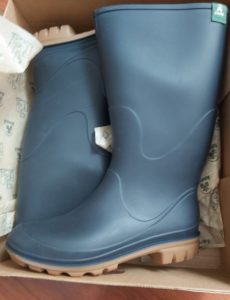
Kamik Miranda Rainboot
Highlights: Made in North America using synthetic rubber that is recyclable through Kamik’s recycling program, these waterproof rainboots have a generous cut and lightweight construction.
Kamik’s rainboots are a great fit for gardening, splashing in puddles, rambling through the forest, or a day at the beach. They’re made in Canada or the US from lightweight RubberHe, which is synthetic rubber but not PVC (Kamik no longer uses PVC in any of their products). The boots themselves don’t seem to be made from recycled rubber but they can be sent back to Kamik for recycling at the end of their life. To recycle your boots, send Kamik an email at recycling@kamik.com to receive a prepaid shipping label.
The company boasts making 360,000 black rain boots from recycled rubber in their North American factories annually. They also claim that their recycled and recyclable packaging saves approximately 132 cars CO2 emissions. Kamik also claims to recycle 90% of the cooling water used in their Canadian factory. There is no third-party auditing of these claims though, and no environmental report with more information, unfortunately. I’ve asked for more info and will update as necessary.
Back to the boots. These have a good grip with decent traction, are fully waterproof, and are vegan-friendly. They are cut wider at the calf for extra leg room, measure 31.5 cm in height and weigh under a kilo at 980 g per pair. The insole is removable and made with EVA foam (it’s not clear if this is the BLOOM EVA foam made from algae. Again, I’ve asked for clarification and will update as needed.
These boots don’t have a felt liner, but for the boots that do, Kamik uses exclusively recycled plastic content, claiming a minimum of three plastic bottles goes into each liner (or 3 million water bottles a year).
All in all, Kamik seem to have taken some decent first steps in the direction of eco-friendliness, but I’d like to see more consistency across their materials and manufacturing processes and more transparency in environmental reporting.
Choosing Eco-Friendly Waterproof Winter Boots
Fall is here and winter’s coming, so how do you pick a pair of boots to keep your feet dry and cozy without harming the planet? Easy! Just grab some leather boots and you’re good to go splash in puddles, right? Not so fast.
While cow skin or other leather might be a natural material, it also decomposes naturally. This means it is preserved or ‘tanned’ by the leather industry, typically using a slew of harmful chemicals including trivalent chromium sulphate, sodium sulphide, sodium sulfhydrate, arsenic and cyanide. This work is almost always carried out in countries with few, if any, safety regulations for workers or the environment, and tannery effluent, i.e., the water run-off from tanneries contains large amounts of pollutants, including protein, hair, salt, chromium and other heavy metals, lime sludge, and acids. These are potential pollutants of air, water, and soil, with chromium one of the most serious pollutants worldwide.
So, what’s the alternative to leather for waterproof winter boots? Your best bet is natural rubber or, failing that, recycled plastic or bioplastic. Sure, conventional plastic is made of petrochemicals, but if you choose boots made using post-consumer plastic waste or polymers made with, say, organic castor oil, this is far less polluting.
Ideally, your new boots will have a natural lining that keeps any petroleum-based plastics away from your skin. This might be made of organic cotton or ethically sourced organic wool, hemp fiber, kapok, or other soft, insulating material. Hemp is ideal because it is naturally antibacterial, which means you can also avoid one of the other sneaky non-eco-friendly hazards of winter boots: chemical antibacterial agents that can leach out and damage the environment.
In general, it’s best to choose shoes made with materials that are naturally waterproof or water-resistant. Those that aren’t are typically treated with PFCs (perfluorocarbons) to make them waterproof. PFCs are bad news for you and bad news for the environment. Many companies, including most on our list, have taken a strong stance against the use of PFCs, phthalates, PVC, formaldehyde, and other chemicals that can harm people and planet.
Other things to consider when buying new winter boots include fair labor practices, the use of child labor, water conservation, chemical run-off and pollution, and other manufacturing and shipping practices that affect carbon emissions and environmental impact overall.